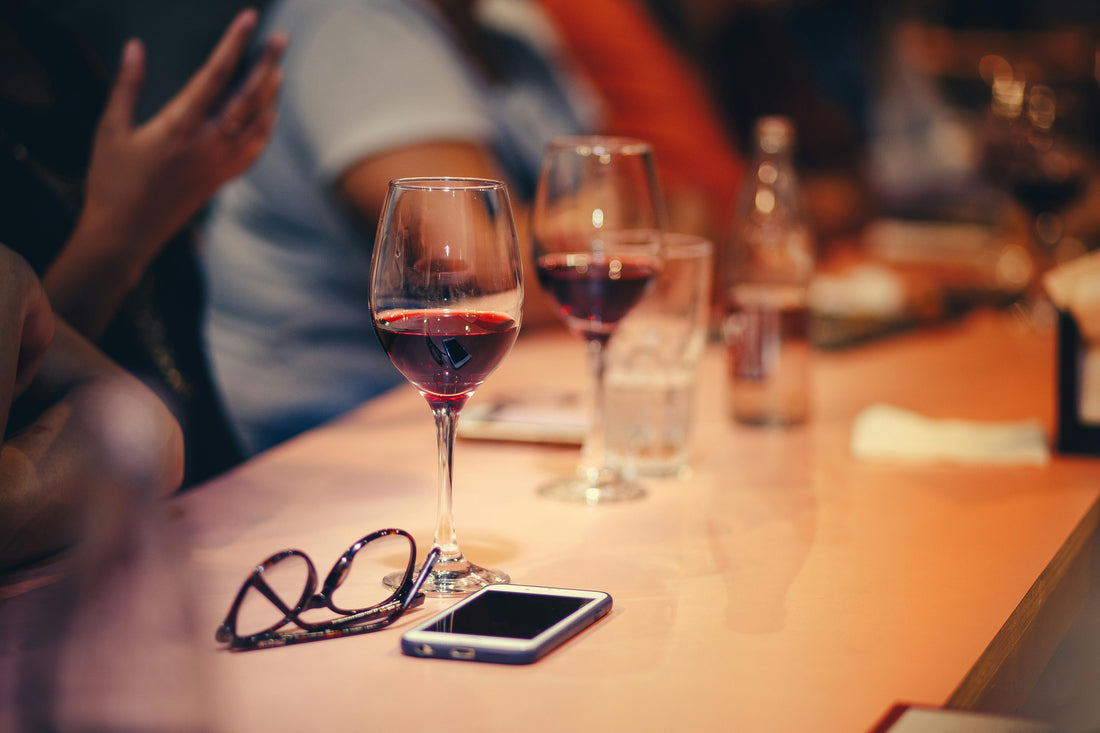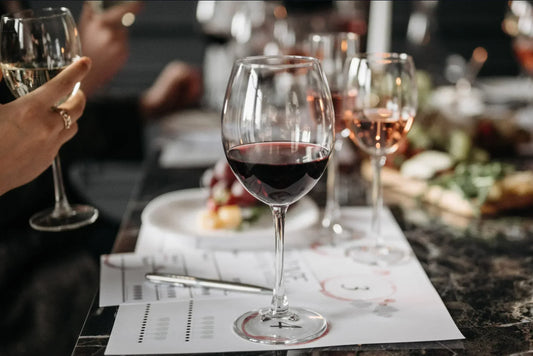
How Many Calories in a Bottle of Wine?
Curious about the calorie content in your wine? A standard 750ml bottle of dry red or white wine usually has between 550 and 750 calories, but keep in mind that sweet and fortified wines may pack even more. In this guide, you’ll discover quick and easy calorie estimates for various popular wine types and serving sizes, whether it's 125ml, 175ml, or 250ml glasses. Plus, you'll find some practical tips to help you select lower-calorie options and enjoy your favourite wines more mindfully.
What Affects Calorie Content in Wine?
Not all wine calories are equal. Even if two glasses seem similar in size, their calorie counts can vary significantly due to certain key factors. Below are the three primary contributors:
- Alcohol by Volume (ABV): Higher ABV means more calories. For instance, a wine with 15% ABV can contain up to 30% more calories than one with 11% ABV. Opt for wines below 12% ABV for a lighter drink.
- Residual Sugar: The residual grape sugar remaining after fermentation is what determines the wine's sweetness and caloric content. The higher the residual sugar, the sweeter and more caloric the wine. Dessert wines, Moscato, and sweet Riesling have high sugar and calorie levels.
-
Wine Style: Dry vs. Sweet:
- Dry wines (like Sauvignon Blanc, Pinot Grigio, Brut Champagne) are lower in sugar and calories.
- Sweet wines (like Port, Ice Wine, Sherry) are higher in both alcohol and sugar, making them much higher in calories.
How Many Calories Are in a Bottle of Wine?
The calorie content of a wine bottle is mainly affected by its type, alcohol content, and sweetness level. Usually, a standard bottle of wine contains 750 ml, which is about five servings, with each glass approximately 150 ml (5 oz). Here are the average calorie counts for popular types of wine, broken down by both bottle and glass measurements.
| Average Calorie Count in a Bottle (a Glass) by Wine Type | |||
|---|---|---|---|
| Wine Type | Alcohol by Volume (ABV) | Calories per Bottle (750ml) | Calories per Glass (150ml) |
| Red Wine | 11 - 13.5% ABV | 606 - 684 calories | 121 - 137 calories |
| 13.5 - 16% ABV | 625 - 750 calories | 125 - 150 calories | |
| Sweet White Wine | 6 - 10% ABV | 550 - 620 calories | 110 - 124 calories |
| 9 - 12% ABV | 620 - 650 calories | 124 - 130 calories | |
| Dry White Wine | 9 - 13% ABV | 550 - 610 calories | 110 - 122 calories |
| 12 - 14% ABV | 600 - 680 calories | 120 - 136 calories | |
| Rosé Wine | 11 - 14% ABV | 546 - 591 calories | 109 - 118 calories |
| Sparkling Wine | 12.5% ABV | 570 - 622 calories | 114 - 124 calories |
| Dessert Wine | 12.5 - 20% ABV | 990 - 1,150+ calories | 198 - 231 calories |
Sources: National Health Service (NHS)
Wondering how many glasses you can pour from a bottle?
👉 Read our "How Many Glasses of Wine in a Bottle?" guide to serve the right amount every time!
How many calories in a 250ml glass of wine?
In the UK, a 250ml glass of wine is often considered a "large glass" and is usually enjoyed in pubs and restaurants for those who prefer a generous pour. This size is commonly used for red, white, and sometimes rosé wines. For a typical dry wine at 13% ABV, you can expect around 180-200 calories in a 250ml glass. Sweeter or higher-ABV wines will have even more calories, making for a richer experience.
| Wine alcohol level (ABV) | 11% | 12% | 13% | 14% | 15% | 20% |
|---|---|---|---|---|---|---|
| Estimated calories (250 ml) | 154 | 168 | 182 | 196 | 210 | 280 |
How many calories in a 175ml glass of wine?
A 175ml glass is the most common "medium" serving size, often seen in restaurants and wine bars. It’s a popular choice for both red and white wines, making it perfect for everyday meals and casual dinners. For a standard dry wine at 13% ABV, a 175ml glass usually has about 125-135 calories, though it can be higher if you opt for a sweeter style or a wine with more alcohol.
| Wine alcohol level (ABV) | 11% | 12% | 13% | 14% | 15% | 20% |
|---|---|---|---|---|---|---|
| Estimated calories (175 ml) | 108 | 117 | 127 | 137 | 147 | 196 |
How many calories in a 125ml glass of wine?
The 125ml glass is known as the UK’s official "small glass" and is usually chosen for enjoying lighter sips, whether as an aperitif or during wine tastings. It’s a wonderful choice for anyone looking to savour wine in moderation, whether it's red, white, or sparkling. For a dry wine at 13% ABV, a 125ml glass contains about 90-100 calories, with sweeter or stronger wines adding a few more calories per pour.
| Wine alcohol level (ABV) | 11% | 12% | 13% | 14% | 15% | 20% |
|---|---|---|---|---|---|---|
| Estimated calories (125 ml) | 77 | 84 | 91 | 98 | 105 | 140 |
Tips for Enjoying Wine with Fewer Calories
Try Canned Wines for Portion Control
Looking for an easy way to enjoy wine without worrying about overpouring or excess calories? Canned wines make portion control simple, helping you stay on track with your health goals while still treating yourself. Here’s why they’re a smart choice:
- Individually sized servings: Each can contains 250ml (about 1.5 glasses) or less, so you know exactly how much you’re drinking and can avoid the temptation to keep refilling from a bottle.
- Guaranteed freshness: Each can ensures perfectly fresh wine, free from the oxidation found in partially consumed bottles.
- Convenient option: Simple to carry and enjoy without the need to commit to a full 750ml bottle when only a single serving is desired.
Canned wines now come in a wide variety of styles and premium options, making it easier than ever to enjoy mindfully and control your calorie intake.
👉 Ready to try for yourself? Discover our canned wine subscription and start sipping smarter.
Look for "Dry" Wines: Less Sugar, Fewer Calories
Opting for dry wines is an easy way to reduce calories, as they have significantly less sugar than sweeter types. When you’re browsing for a lower-calorie option, look for these styles and grapes:
- Dry White Wines (100-120 calories per 150ml): Pinot Grigio, Sauvignon Blanc, Albariño, Grüner Veltliner.
- Dry Red Wines (110-130 calories per 150ml): Pinot Noir, Gamay, Cabernet Franc.
- Brut or Extra Brut Sparkling Wines (110-130 calories per 150ml): Champagne, Cava, Prosecco.
By picking dry, low-ABV wines and skipping sweeter styles, you’ll save 50+ calories per glass and enjoy wine that fits better with your health goals.
Lower ABV = Lower Calories: Aim for 9-11% ABV
Alcohol contains about seven calories per gram, nearly twice the amount found in carbohydrates. If you are conscious of your calorie intake, opting for wines with lower alcohol content can be an enjoyable choice. Wines with an ABV of 9-11% are excellent options to consider. You will notice that many lovely German whites, refreshing Portuguese Vinho Verde, and sparkling Italian Prosecco fall into this lower-calorie category. For each percentage point decrease in ABV, you can save approximately 10-15 calories per glass!
Conclusion
Understanding how many calories are in a bottle or glass of wine can help you make smarter choices that suit your lifestyle and health goals. Whether you’re tracking calories or simply wanting to enjoy wine more mindfully, choosing dry styles, lower ABV options, and staying mindful of portion sizes makes it easier to savour your wine without any guilt.
FAQ
1. How many calories are in a bottle of wine?
A standard 750ml bottle of dry red or white wine usually contains 550-750 calories, but sweet and fortified wines can have over 1,000 calories per bottle.
2. How many calories are in a glass of wine (125ml, 175ml, 250ml)?
- 125ml (small glass): 77-105 calories (depending on ABV)
- 175ml (medium glass): 108-147 calories
- 250ml (large glass): 154-210 calories
Sweet or high-ABV wines will be at the higher end of these ranges.
3. Which type of wine has the lowest calories?
Dry white wines (like Pinot Grigio, Albariño, Sauvignon Blanc), dry rosé, and Brut sparkling wines usually have the fewest calories per glass, especially if the ABV is below 12%.
4. Are calories in red wine higher than in white wine?
Typically, red wines have a slightly higher ABV, making them a bit more caloric than most white wines of the same size. But the difference is often small; portion size and sweetness matter more.



